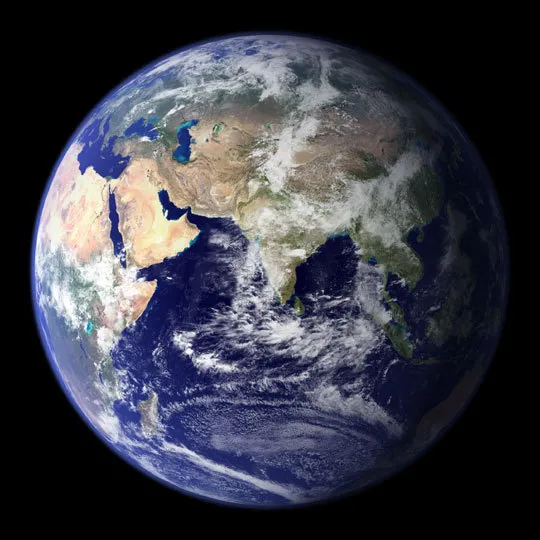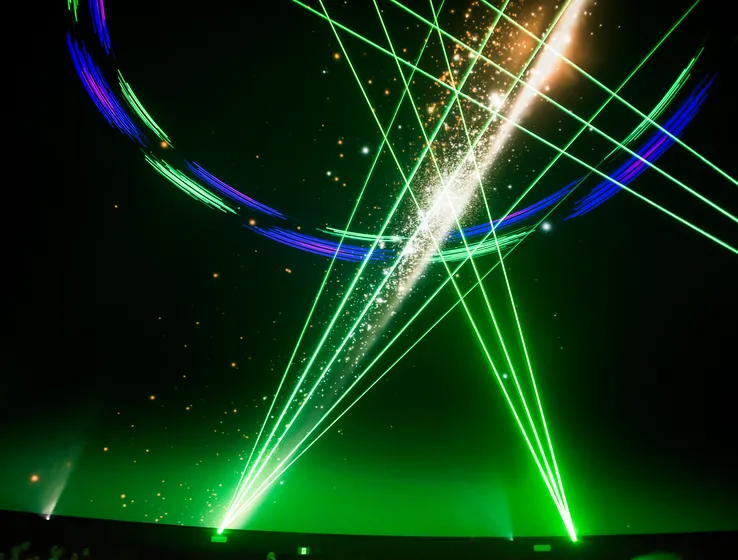Satellites Are Out of This World!
Posted:
Origin Story: Why Are Satellites Important?
When we look at the Earth from afar, more than ever we realize how much we are taking for granted. We are the only planet known to contain life among thousands or maybe even millions around us. How is it that we have let it suffer so badly? Taking a step back to observe can really be an eye opener, and our space technology makes it possible. Climate change probably does not come to mind when you think of space research. You would likely think of asteroids, stars, and rovers driving around on Mars. However, our planet Earth has been quite central to space exploration for a long time.
Observations of Earth from space are done using satellites. A satellite is a small object that orbits around a larger one in space. By this definition, our moon is a natural satellite. On the other hand, a man-made satellite is space technology which is used for many purposes such as monitoring temperature, weather, disasters, pollution, and for communication. Many of the features in your television and phones are possible because of satellites. We have over four thousand satellites orbiting our planet right now that take close observations of human activity and nature. Through these observations, we have gained a whole new perspective of our planet.
Taking a Step Back…Fighting Climate Change from Space!
Much of our daily activities that contribute to the negative impacts of climate change are often observed by satellites in space. This includes land use, energy use, garbage generation, and light pollution. These factors worsen as our cities become larger. In the past decades, an increased number of people started to live in cities rather than the quieter and less crowded rural areas. The process of more and more people moving into cities is called urbanization. This has very detrimental consequences for our environment.
Sustaining cities requires a lot of energy. As a result, urban areas produce more greenhouse gas emissions than any other way of living. The effects of this can be observed through space technology. Although there are methods to monitor these effects from the Earth’s surface, they are often very limited in scope since it covers less surface area. Satellites are able to detect harmful greenhouse gases such as carbon dioxide and methane and provide a detailed analysis of them. Satellites also show us where exactly this pollution is coming from. Most importantly, with the information satellites give us we can predict sources of potential problems and prevent them before they happen.
One of the consequences of urbanization is that our growing populations generate much more garbage per person. Waste disposal is a significant issue that contributes to the pollution of our world by ending up in huge landfills. These massive dumps are simply cleared areas of land with hundreds of feet of waste buried beneath them. Using satellite imagery, it has been much easier for the governments and municipalities to keep track of these landfills that are growing. Sizes and growth are an obvious thing to observe but urban landfills have also been analyzed by researchers using numerous methane-monitoring satellites. These landfills emit abnormally high levels of methane, which is a harmful greenhouse gas and can lead to increased warming of the atmosphere. Countless studies using landfill observation from space have brought more attention to this issue which is exactly what we need to take better action in reducing our waste.
Another consequence of urbanization is the use of city lights that become so excessive it can be seen from space! This is known as light pollution. Plants and animals are extremely impacted by it since many of them behave according to day and night cycles. In other words, if they get confused by bright lights at night, they will start to behave differently, a pattern that can lead to declines in some species' populations. Satellite images at night can easily spot bright city lights that typically outline densely populated urban areas. Data has shown us that these lights are only getting brighter in many places around the world. This information has helped many scientists find solutions that improve the lighting styles to minimize light impact. Some suggestions include switching to use of LED lights, using warmer lights, and turning off lights in empty spaces like offices. Our observations of this from space helps determine where the most action is urgently required.
Looking at the bigger picture in the midst of a crisis can be really helpful. With regards to climate change, satellites and observations from space do just the trick! The global view from satellite images is unmatched in their ability to show us exactly what is happening that we cannot easily see from our planet’s surface.
Try This at Home: Exploring Images from Space
One of the most common uses of satellite imagery is mapping. Over time, software like Apple Maps and Google Earth satellite imagery has become more common in everyday use than paper maps and made navigation so much easier. Through modern technology, you can now view clear images of Earth’s surface from today to many years ago to see how our land use has changed over time. There are countless different aspects of Earth’s surface to study. Go to Google Earth and click the steering wheel you see on the left bar (or the top right if you are using the app), then click “Time Lapse in Google Earth”. Now, browse through the cities you see under “Urban growth” or find the city you live in using the “search the planet” option and observe how it has changed over time. Do you notice less greenery? Zoom in to see what exactly is making up the pale brown or gray areas you see.
Take a close look at our local conservation area, called “Credit Valley Conservation”. Does the satellite imagery overtime show change in its greenery and infrastructure around it? How do you think we could use this information to do better? Do you think that this conservation area is losing its effectiveness in providing a good space for wildlife?

Earth view from afar. Satellite image by NASA

City of Toronto. Satellite image taken at night by NASA
Climate Action: It Is Never Too Light to Learn!
Once the sun sets, take a look outside. Your front yard, backyard, and the sky. Do you see darkness? If you live in a densely populated area it is likely that you will be able to see many things clearly. That is, except for the beautiful stars in the sky because of our city lights. A climate action you can do to counter light pollution is to make sure your household or outdoor lighting is not emitting light when and where it is not needed. It may not seem like a big difference but the hundreds of little insects and possibly some larger animals around your house will be thankful to you.
Use only warm-coloured bulbs. LEDs and CFLs can minimize energy and safeguard the environment much better than incandescent light. It is possible to further reduce average illumination levels and save energy by using dimmers, motion sensors, and timers. In addition, avoid scattering light that goes everywhere. Rather, it should focus on one area which you may need to see at night. Remember, late at night when everyone is sleeping is no doubt the best opportunity to save energy!
THIS ARTICLE IS COURTESY OF GENACTION.
Credit
This Science Spotlight was written based on information shared by the Canadian Space Agency’s Space-Based Earth Observations and Canadian Space Agency. “Engagement Paper: Space-Based Earth Observation - 2020.” Canadian Space Agency. / Government of Canada, June 19, 2020. https://www.asc-csa.gc.ca/eng/publications/sbeo/2020-engagement-paper-space-based-earth-observation.asp
Related Articles


Food Chain Reactions
How Climate Change is Impacting Canada's Lakes


It Is Ice to See You
How Seasonal Connections Are Affected by Climate Change


Getting to the Core of Climate Change
A Look at How Refrigerants Are Affecting Our Environment through Ice Cores
Related Articles


Food Chain Reactions
How Climate Change is Impacting Canada's Lakes


It Is Ice to See You
How Seasonal Connections Are Affected by Climate Change


Getting to the Core of Climate Change
A Look at How Refrigerants Are Affecting Our Environment through Ice Cores





